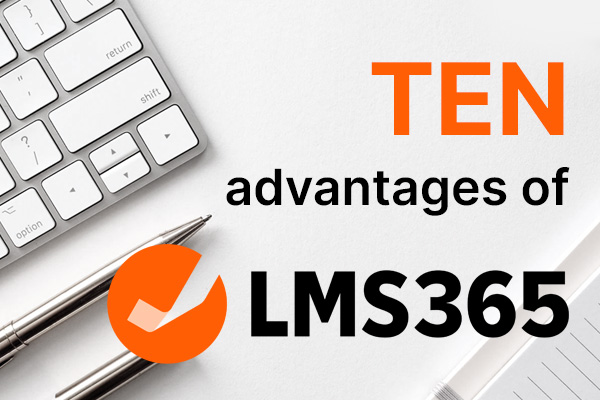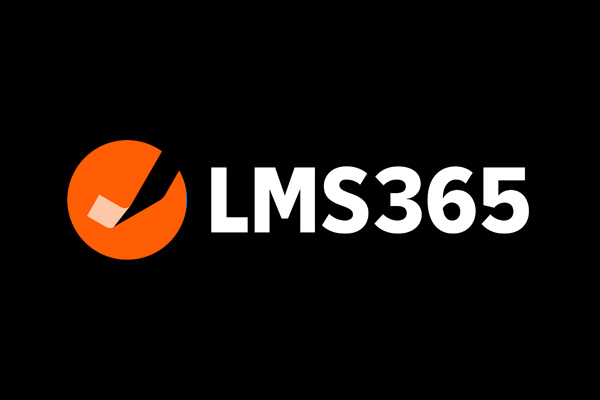
SharePoint is not traditionally viewed as a learning technology, but this is changing. There are now Learning Management Systems (LMS) and Learning Platforms available that are based on SharePoint, and can integrate seamlessly with your existing SharePoint and Microsoft 365 environment. The best SharePoint-based LMS on the market is Zensai (LMS365), a solution that we implement with our clients, but there are a number of different products available.
There are multiple reasons why an LMS must be part of any learning and development strategy, as they help to support a blended learning programme, put learners in control of their own learning, and facilitates remote learning, especially in the current hybrid working environment. But there are also additional features which make a SharePoint LMS likely to be the best option for your organisation.
Lets explore seven reasons why a SharePoint LMS will bring more benefits than any other system.
1 Bringing learning into the flow of work
Most digital workplaces are built on Microsoft 365, and that invariably involves SharePoint. Microsoft 365 is the platform where work is truly happening, with many employees using Outlook, Microsoft Teams, Yammer, and SharePoint throughout the working day.
When you seamlessly integrate a SharePoint LMS into your digital workplace, you can not only use AAD profiles to ensure single sign-on, but it also means you can leverage the familiarity of SharePoint Moderns design. With SharePoint, your LMS is truly embedded into the heart of your digital workplace, allowing learning to happen into the flow of work. It even gives you the ability to view learning material through a channel like Teams.
Accessing learning through Microsoft 365 helps drive adoption by removing many of the barriers associated with a traditional, non-SharePoint LMS; if your LMS is on the periphery of the digital workplace, often with a different password and a different interface to a users network ID, the extra effort required to access it can damage the take up of learning.
2 Integrating with your SharePoint intranet
If you have Microsoft 365, it is likely that you will have a SharePoint intranet. Integrating your SharePoint intranet and your SharePoint LMS brings a number of advantages, including the ability to:
- Create additional interfaces, views and entry points into learning content to drive value and support adoption
- More easily promote learning via your key communications channel, for example, reminders to do mandatory training
- Bring learning content into your intranet search so course material is more discoverable
- Bring different content on a single topic together all in one place, such as SharePoint documents, course material and a Yammer group to form a one stop shop which could be used to create a portal for new starters
- Bring intranet pages and assets into your learning course catalogue
- Leverage the power of SharePoint lists to integrate into your learning.
Ultimately, a SharePoint LMS and intranet helps you to create content and experiences which will support both adoption and wider learning goals.
3 Using social channels for peer-to-peer recommendations
SharePoint commenting, Yammer, Microsoft Teams and even (arguably) Outlook-based email, are all social channels where conversations between employees happen. When you have a SharePoint LMS, it opens up the possibility for peers to recommend and link to courses and learning content using these social channels across the Microsoft suite. Social learning and peer-to-peer recommendations can help to drive the adoption of more formal learning material that you have on your SharePoint LMS; this can also be the exciting point where you start to create a bottom-up learning culture which can have multiple benefits for employees and organisations.
4 Using Azure Active Directory (AAD) profiles
Many organisations use Active Directory (AD) or Azure Active Directory (AAD) profiles to target content and messages to different groups based on location, role, division, place in the hierarchy and so on. For example, content targeting on a SharePoint intranet usually uses AAD profile data. SharePoints integration with AD & AAD means that a SharePoint LMS can effortlessly use profile data to target learning to different groups, and also underpin automated enrolment to various courses, one example being a course for sales staff. This can save learning administrators huge amounts of time, as well as help ensure learning is relevant across a diverse workforce.
5 Leveraging the power of SharePoint search
With a non-SharePoint LMS, the findability of learning content is usually restricted to searches made through a course catalogue. This limits the discoverability of learning material, and also leaves you to the mercy of the quality of the search tools within your LMS. With a SharePoint LMS, you can leverage the full power of SharePoint or Microsoft search; this makes your content far more discoverable, not only because of the superior search facility, but also because you can include learning content in more general topic searches on your intranet. This, again, brings learning directly into the flow of work and supports adoption efforts.
6 Integration with the rest of the Microsoft 365 suite
Because a SharePoint LMS can integrate with Microsoft 365, it means you can easily take advantage of the suites power to make it easier to manage your learning programme, while also creating a better experience for learners. For example, integrating a SharePoint LMS with Power BI means you can create exceptional learning dashboards to track progress and even bring in data from other systems. These dashboards are not necessarily just for learning teams – they may even be useful as a personal option for learners and their managers.
You can also use Power Automate to create workflows around learning, for example, triggering bespoke registration for different new starters courses, or Outlook messages and calendar invitations when someone registers for a course. There are also exciting options to use PowerApps to create an app with a learning component which could be used to support employee onboarding. These kinds of opportunities are not always possible using a non-SharePoint LMS.
7 Future proofing
SharePoint and Microsoft 365 are not going to be disappearing any time soon. In fact, they are likely to be the dominant work platform for the next decade, and possibly beyond that. By investing in a SharePoint LMS, you are investing in an LMS that can evolve along with your digital workplace.
Need to implement a SharePoint LMS? Get in touch!
If you have Microsoft 365 or have a SharePoint intranet, then a SharePoint LMS is absolutely the way to go for your learning platform. If youd like more information about a SharePoint LMS, the LMS365 offering or your digital workplace, then get in touch!

Find out more about Zensai...
Request a call back with one of our experts, for a free consultation about how Zensai (LMS365) can benefit your business.




